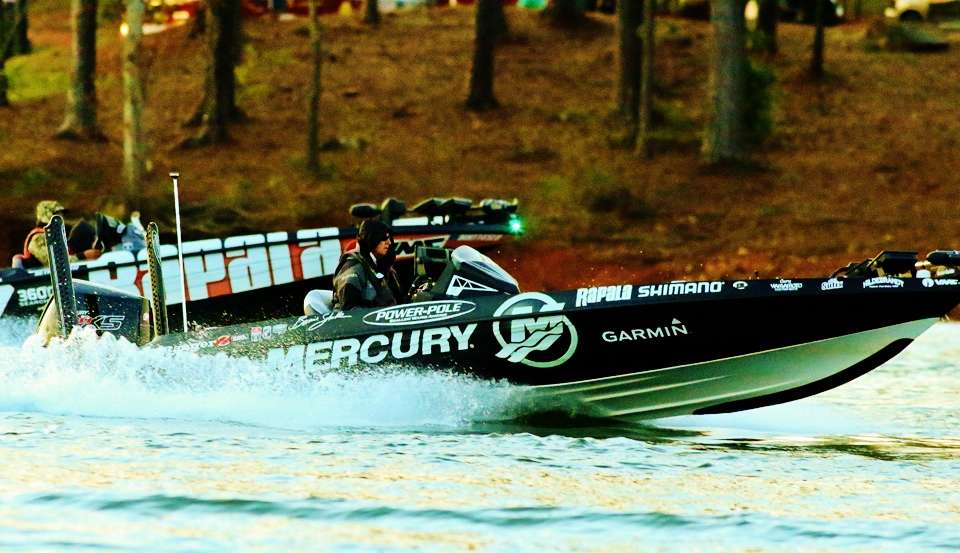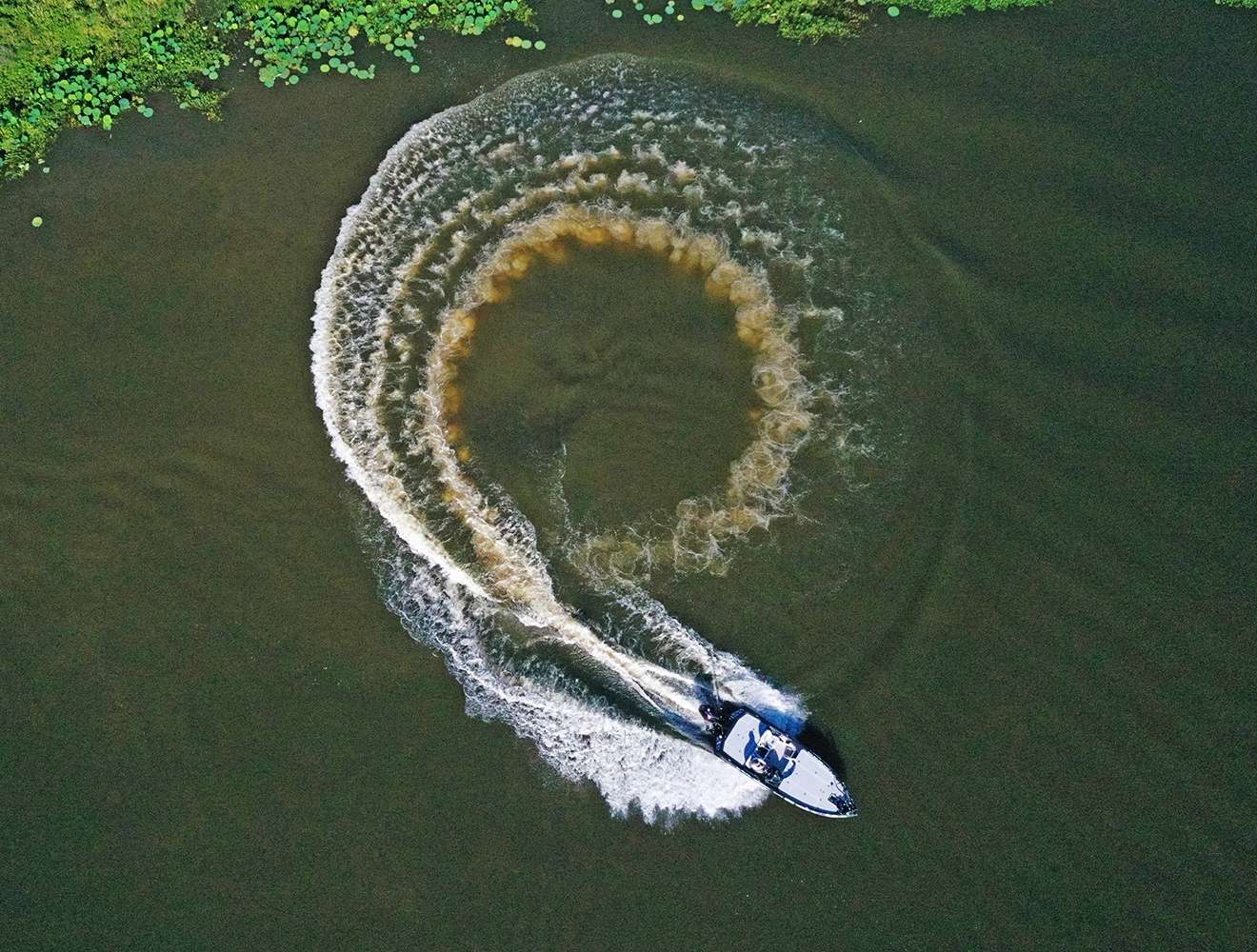
Ask any touring pro if a hydraulic jackplate is worth the money, and I’d bet their answer would be an emphatic “yes!” On the Bassmaster Elite Series, they’re considered essential equipment … for multiple reasons.
Although they may be a bit pricey, hydraulic jackplates can vastly improve the performance of your bass boat — both at the top end and in the ability to run shallower at low or high speeds. They can even improve the ride.
A simple touch of a lever or toggle switch allows the operator to raise or lower the outboard engine while under power, at any speed. Combine that with the engine’s power trim and you’ll realize advantages beyond the obvious.
Skinny as she goes
Consider bedding season when, on some lakes and rivers, you’re dealing with vast, shallow flats — places where the fish may concentrate only in small areas.
Covering water is required to find those fish, and using a trolling motor to do it can be tedious and time consuming. Idling with the main engine makes much more sense. But without a jackplate, you would have to trim the engine up, which squats the stern and bogs the engine down, making maneuvering much more difficult … not to mention the added disturbance it causes in situations requiring stealth.
With a hydraulic jackplate, you can raise the engine up high and adjust the trim to give the boat a flatter attitude. This not only improves maneuverability, it allows you to increase idle speed to cover more water while creating less disturbance.

The ability to raise the engine also allows you to plane off in shallow water — much shallower than would be possible with a fixed engine height. This is a huge advantage, especially in places that normally require long idle times to reach adequate planing depths.
A trick I learned from flats fishing in saltwater is to take advantage of the clockwise rotational lift of a spinning prop. By turning the steering wheel all the way to the left (which puts the leading edge of the skeg facing right, the same direction of the prop’s clockwise rotation) you then realize added lift when applying full throttle. This kicks the stern around and actually throws out a small wake, which provides a slight increase in water depth for the prop to bite in. In addition, with the engine cocked at an angle, you minimize contact with lake bottom as the boat leans to one side. As the hull begins to plane, you gradually lower the engine to submerge the water pickup. (This is critical, as you do not want to starve the engine for water for any length of time.)
Using this counterclockwise maneuver, the boat will usually spin to a full circle before reaching planing speed. And it happens quick, so it’s a good idea to plan your exit route ahead of time. Once up and running, you simply adjust the trim and engine height to your liking.
Here’s a short video that demonstrates the technique.

Digging deeper
While hydraulic jackplates prove beneficial in the shallows, they can also enhance performance in deep water.
Because they set the engine farther from the transom (usually up to 12 inches), it effectively increases the overall length of the boat — which, in turn, makes it bridge more water. And that’s good, especially in rougher conditions. But the biggest advantage is the additional leverage they provide.
By dropping the jackplate and tucking the engine under, you can greatly improve handling in choppy water. This added “pinch” on the hull and motor will force the bow down to create a flatter ride. If you have ever plowed through rough seas in a strong headwind, then you know how critical this can be.
Bass boats are notoriously stern heavy. When you factor the weight of multiple batteries, an onboard charger, fuel, livewells, Power-Poles and gear, keeping the bow down can become a serious challenge, and a hydraulic jackplate will compensate for that.
Need for speed
For the totally performance minded, jackplates also add top-end speed with better handling. By lifting most of the lower unit out of the water, you minimize torque at the wheel and decrease drag. Add a bit of trim and the bow will lift while increasing speed. The trick here is finding just the right height with the plate and proper trim to reach the ideal RPMs … all while maintaining sufficient water pressure.
Every boat will be different, so it may take some tweaking with the right prop and engine position to realize your boat’s top-end speed.
There are a number of quality jackplates on the market, including CMC, SeaStar, Bob’s Machine Shop and T-H Marine. And most of these brands offer multiple offset sizes (6, 8, 10 and 12 inches are common) capable of handling the weight of large-block outboards.
I run a 12-inch Atlas by T-H Marine. It’s quick, quiet and self-contained with no messy remote pumps or hoses, and it works well under power in a chop. I also run one on my saltwater skiff and have for years with zero issues.
Most brands offer a console gauge to monitor engine height, but they won’t tell you if your water pickup is submerged and functioning. For that you’ll need a reliable water pressure gauge. Believe me; you can jack an engine to the point where it’s starving for water. If you do that for more than a few seconds at speed, you can fry your engine.
One last tip: If you’re using your jackplate for top end performance, I highly recommend mounting a lever-style switch on the steering column. Just like the blinker switch in your car, it’s quick and handy. In fact, I suggest mounting a matching trim lever on the opposite side. That way, both hands are always on the wheel, which will ensure a much safer boating experience.
Follow Bernie Schultz on Facebook and through his website.






